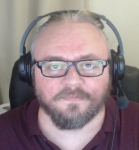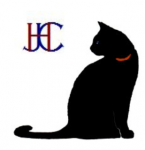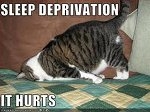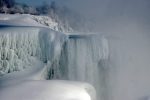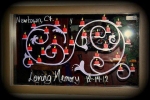Continuation of Zeo Conversation
Re: Continuation of Zeo Conversation
SleepyHead will eventually have a serial module for devices like zeo.. It will record the "brainwave" data similar to how oximetry live view does it. (It will be a generic EEG module, ZEO will be a basic plugin for that)
No special firmware is needed for Zeo models with serial ports, and it's already well documented and in lots of projects..If the cable needs to be made, I'm sure someone clever can solder them up and put them on ebay..
I don't know why ZEO encrypted their .DAT files.. The provided a tool to "decrypt" them.. It's in crummy compiled java bytecode.. They probably did it originally because they were frightened it would expose a weak or "borrowed" algorithm.. (Seriously, if software patents were banned tomorrow, innovation would skyrocket!)
From my python experiments right at the beginning I found the 30 second CSV is only really good for determining whether or not a person is asleep. The REM & Light phases in all cases seemed to have pure random distribution.. (I'll do some distribution plots on it later, but I've got to start collecting a larger sample set.. please send me your CSV files :-})
However in "Deep Sleep", the flow waveforms seemed to match breathing and event patterns . Transitions from Deep Sleep to lighter stages always seemed to followed events.. (reasonably indicating an awakening)
Two data sources are needed to reasonably gauge REM.. One is frontal EEG, the other is an ocular signal, which zeo does not provide.. The ocular signal is needed to filter the EEG, as every time you blink, or really go into REM, spikes pop up in the EEG that interfere with processing..
I think Zeo would have better luck with a very finely tuned accelerometer worn on the forehead right above the eyes in addition to the pads.
No special firmware is needed for Zeo models with serial ports, and it's already well documented and in lots of projects..If the cable needs to be made, I'm sure someone clever can solder them up and put them on ebay..
I don't know why ZEO encrypted their .DAT files.. The provided a tool to "decrypt" them.. It's in crummy compiled java bytecode.. They probably did it originally because they were frightened it would expose a weak or "borrowed" algorithm.. (Seriously, if software patents were banned tomorrow, innovation would skyrocket!)
From my python experiments right at the beginning I found the 30 second CSV is only really good for determining whether or not a person is asleep. The REM & Light phases in all cases seemed to have pure random distribution.. (I'll do some distribution plots on it later, but I've got to start collecting a larger sample set.. please send me your CSV files :-})
However in "Deep Sleep", the flow waveforms seemed to match breathing and event patterns . Transitions from Deep Sleep to lighter stages always seemed to followed events.. (reasonably indicating an awakening)
Two data sources are needed to reasonably gauge REM.. One is frontal EEG, the other is an ocular signal, which zeo does not provide.. The ocular signal is needed to filter the EEG, as every time you blink, or really go into REM, spikes pop up in the EEG that interfere with processing..
I think Zeo would have better luck with a very finely tuned accelerometer worn on the forehead right above the eyes in addition to the pads.
_________________
| Machine: ResMed AirSense™ 10 AutoSet™ CPAP Machine with HumidAir™ Heated Humidifier |
| Mask: Swift™ FX Nasal Pillow CPAP Mask with Headgear |
| Humidifier: S9™ Series H5i™ Heated Humidifier with Climate Control |
| Additional Comments: CMS50D+/F Oximeter, S9 VPAP Auto/Adapt, PRS1 Auto, Intellipap Auto, SleepyHead :) |
Author of the free, cross platform, open-source sleep tracking software SleepyHead.
Download http://sleepyhead.jedimark.net
Source Code http://gitlab.com/sleepyhead/sleepyhead-code
Download http://sleepyhead.jedimark.net
Source Code http://gitlab.com/sleepyhead/sleepyhead-code
- Jay Aitchsee
- Posts: 2936
- Joined: Sun May 22, 2011 12:47 pm
- Location: Southwest Florida
Re: Continuation of Zeo Conversation
As Jedi pointed out, Zeo is not 100% accurate. Zeo only claims to be 75% accurate in determining sleep stages as compared to the 85% accuracy of a PSG. They acknowledge REM is often incorrectly scored in the following quote and elsewhere on their site:
I think the value of Zeo lies in its ability to establish trends, not, obviously, in its ability to determine each night's sleep stages with complete accuracy.
Jay
Lastly, REM sleep is a very active sleep stage for our brains – sometimes more active than Wake! As such sleep scientists often misread Wake as REM and Zeo, which uses the same scoring criteria as professionals, can also make a similar mistake
I think the value of Zeo lies in its ability to establish trends, not, obviously, in its ability to determine each night's sleep stages with complete accuracy.
Jay
_________________
| Mask: AirFit™ P10 Nasal Pillow CPAP Mask with Headgear |
| Additional Comments: S9 Auto, P10 mask, P=7.0, EPR3, ResScan 5.3, SleepyHead V1.B2, Windows 10, ZEO, CMS50F, Infrared Video |
- MaxDarkside
- Posts: 1199
- Joined: Sun Dec 18, 2011 4:21 pm
- Location: Minneapolis, MN
Re: Continuation of Zeo Conversation
We have the advantage that we have more data than Zeo, which makes it easier to identify sleep stages and events by combining all the sources. I think I have what I need at this stage, using our software here. I just wish I could get real-time data from the S9 to avoid any time-synch misalignment. I could algorithmically align the imported S9 data, but would rather not because that damages certain information between the streams.
_________________
| Mask: Quattro™ FX Full Face CPAP Mask with Headgear |
| Humidifier: S9™ Series H5i™ Heated Humidifier with Climate Control |
| Additional Comments: CMS-50E Oximeter, Zeo Bedside, Software: Comm'l grade AI analytics server & tools & SleepyHead |
Do or Die... Sleep Apnea killed me, but I came back. Click for my story
Please visit my My Apnea Analytics blog. Maybe we can help each other.
54 yrs, 6' 1", 160->172 lbs
Please visit my My Apnea Analytics blog. Maybe we can help each other.
54 yrs, 6' 1", 160->172 lbs
- tschultz
- Posts: 257
- Joined: Sun Dec 19, 2010 9:36 pm
- Location: Moncton, NB, Canada, Earth, Milky Way Galaxy
Re: Continuation of Zeo Conversation
Yes, correlating the Zeo data with the respiratory information should help to determine the sleep stage. Looking at the mask pressure and respiratory rate gives me a very good indication of whether I was awake or not. Including oximetery information would help as well.
I do wish the Zeo headband incorporated a 2 or 3 axis accelerometer as well. Although not perfect head position would help to provide positional information for the rest of the body.
I do wish the Zeo headband incorporated a 2 or 3 axis accelerometer as well. Although not perfect head position would help to provide positional information for the rest of the body.
_________________
| Humidifier: S9™ Series H5i™ Heated Humidifier with Climate Control |
| Additional Comments: Currenlty using Auto 15-20, EPR 1 with medium response; 95% pressure is 16.8 |
Adjusting to life with OSA and being pressurized each night ...
Re: Continuation of Zeo Conversation
Next time I download my zeo data, I'll be happy to send you the CSV file. You want the one downloaded. Or do you want one that only has the 30 second epoch numbers in it? And if it's that, you want it converted from a long list of numbers that are only separated by blanks to one that's separated by commas?jedimark wrote: From my python experiments right at the beginning I found the 30 second CSV is only really good for determining whether or not a person is asleep. The REM & Light phases in all cases seemed to have pure random distribution.. (I'll do some distribution plots on it later, but I've got to start collecting a larger sample set.. please send me your CSV files :-})
In my data it seems that most of my events occur as the zeo is saying I'm going from WAKE to Light. Of course, this tends to reflect my diagnostic sleep test: My worst clusters were not in REM, but were as I was finally actually making the transition from WAKE to SLEEP in the first place.However in "Deep Sleep", the flow waveforms seemed to match breathing and event patterns . Transitions from Deep Sleep to lighter stages always seemed to followed events.. (reasonably indicating an awakening)
_________________
| Machine: DreamStation BiPAP® Auto Machine |
| Mask: Swift™ FX Nasal Pillow CPAP Mask with Headgear |
| Additional Comments: PR System DreamStation and Humidifier. Max IPAP = 9, Min EPAP=4, Rise time setting = 3, minPS = 3, maxPS=5 |
- tschultz
- Posts: 257
- Joined: Sun Dec 19, 2010 9:36 pm
- Location: Moncton, NB, Canada, Earth, Milky Way Galaxy
Re: Continuation of Zeo Conversation
I just sent you, via email, 2 weeks worth of Zeo data with the plots from their web interface so you can correlate them.
Form what I've seen so far the Zeo shows I don't get much deep sleep and its more fragmented than it should be. My next step is to overlay the Zeo sleep stages with my xPAP data and see how things line up. I suspect the deep sleep detection is pretty good (delta waves at 0-4Hz are easily distinguished) with Zeo's 100Hz raw data sample rate.
Form what I've seen so far the Zeo shows I don't get much deep sleep and its more fragmented than it should be. My next step is to overlay the Zeo sleep stages with my xPAP data and see how things line up. I suspect the deep sleep detection is pretty good (delta waves at 0-4Hz are easily distinguished) with Zeo's 100Hz raw data sample rate.
_________________
| Humidifier: S9™ Series H5i™ Heated Humidifier with Climate Control |
| Additional Comments: Currenlty using Auto 15-20, EPR 1 with medium response; 95% pressure is 16.8 |
Adjusting to life with OSA and being pressurized each night ...
Re: Continuation of Zeo Conversation
Wow.. An alarm clock that can't tell the time.. That's something you don't head about every daytetragon wrote:My Zeo has the worst slew of all the timesources that I deal with. I know, NTP is spoiling me, but my Zeo is awful about it, on the order of a few seconds per day, and so every few days I adjust the clock. This is why in the test stream I sent you, I pushed the snooze button at the same time as I started my machine. That event is sent over serial, but it is lost in the simple methods of obtaining CSV output (the reported snoozes relate to a given alarm, not a pre-alarm snooze). It may be stored in the .DAT file, but I haven't gone digging for it.jedimark wrote:To complicate this further is CPAP clock drift.. I'll add a preference to allow you to manually set the drift time (and an easy way of purging Zeo data for experimenting with it to find the clock drift) Maybe the oximeter trick will work to get better sync?
I've still got to look into that .DAT stuff.. I read through the format notes a couple of times.. but each time my brain was jelly from fog..
I've only seem to grok stuff well lately when I hack my way through it..
Hopefully that snooze trick works..
The serial port stuff is gonna be nice and easy though.. Very simple Python code demonstrates how to work with it..
Plus the serial libraries are already in SleepyHead for oximetry support.
_________________
| Machine: ResMed AirSense™ 10 AutoSet™ CPAP Machine with HumidAir™ Heated Humidifier |
| Mask: Swift™ FX Nasal Pillow CPAP Mask with Headgear |
| Humidifier: S9™ Series H5i™ Heated Humidifier with Climate Control |
| Additional Comments: CMS50D+/F Oximeter, S9 VPAP Auto/Adapt, PRS1 Auto, Intellipap Auto, SleepyHead :) |
Author of the free, cross platform, open-source sleep tracking software SleepyHead.
Download http://sleepyhead.jedimark.net
Source Code http://gitlab.com/sleepyhead/sleepyhead-code
Download http://sleepyhead.jedimark.net
Source Code http://gitlab.com/sleepyhead/sleepyhead-code
Re: Continuation of Zeo Conversation
Who needs to be able to tell the time when you have their SmartWake mode, which, when I tried it, would go off the moment the window opened. It made up for the clock running a few minutes slow.jedimark wrote:Wow.. An alarm clock that can't tell the time.. That's something you don't head about every day
The serial stream does include what time the Zeo thinks it is. There could even be a Zeo slew graph, where slew is determined relative to computer time.
_________________
| Mask: AirFit™ P10 For Her Nasal Pillow CPAP Mask with Headgear |
| Additional Comments: Software: SleepyHead, loosely following HEAD |
Re: Continuation of Zeo Conversation
Well that's not good (or that's very good, depending on your point-of-view).MaxDarkside wrote:No, I don't have cataplexy.deltadave wrote:OK, but before you go, do you have any of the other tetrad of N., especially cataplexy (cataplexy is often the "deal-maker" in N.). Gonna get a lab test (HLA-DQB)?
How about hypnagogic hallucinations?
...other than food...
Re: Continuation of Zeo Conversation
I'd say even that is generous:Jay Aitchsee wrote:As Jedi pointed out, Zeo is not 100% accurate. Zeo only claims to be 75% accurate in determining sleep stages as compared to the 85% accuracy of a PSG.
deltadave wrote:ASSESSMENT OF A WIRELESS DRY SENSOR TO DETECT SLEEP IN HEALTHY VOLUNTEERS AND SUBJECTS WITH SLEEP DISORDERS
Blake S,, Pittman SD, MacDonald MM, Sun K, Lanzi B, Clark D, Hueser L, Fabregas SE, Shambroom JR, White DP
Philips Home Healthcare Solutions (Philips Respironics), Boston, MA, USA, Sleep HealthCenters, Boston, MA, USA, Zeo, Inc (formerly Axon Labs, Inc), Newton, MA, USA
Introduction: A simple, easy-to-use portable device to detect sleep stages could have many applications in sleep research and clinical practice. We assessed a device with dry fabric sensors that require no skin preparation and are integrated into a simple headband for wireless transmission to a separate bedside monitor. Sleep stages are scored automatically by a neural network. Our aim was to compare sleep scored by the wireless system (WS) to manual scoring of concurrent polysomnography (PSG) in both healthy volunteers and subjects with sleep disorders (obstructive sleep apnea (OSA) and insomnia).
Methods: 30 subjects (10 healthy volunteers, 10 OSA patients, 10 insomniacs) participated. Each subject was setup for a standard PSG and the investigational wireless system for concurrent overnight recordings in our sleep laboratory. WS data were sampled by a 12-bit A-D for automated scoring of 30-second epochs of Wake, Light Sleep (N1+N2), Deep Sleep (N3), and REM sleep. Each PSG record was manually scored using recommended AASM criteria by 2 registered sleep technologists blinded to the results of the wireless system (M1 and M2). Sleep onset latency to 10 minutes of persistent sleep (LPS), total sleep time (TST), and sleep efficiency (SE) were derived from the records for comparison in addition to sleep stage agreement and Cohen’s κ using a confusion matrix.
Results: PSG and WS data were available for 29 subjects for a total of 24,138 epochs. Sleep staging (all subjects) agreements/κ were: WS-M1: 68%/0.50, WS-M2: 68%/0.48, M1-M2: 88%/0.79. Sleep staging (healthy volunteers, n=10) agreements/κ were WS-M1: 73%/0.58, WSM2: 72%/0.51, M1-M2: 89%/0.81. Sleep staging (sleep disordered subjects, n=19) agreements/κ were WS-M1: 65%/0.45, WS-M2: 66%/0.44, M1-M2: 88%/0.81. Mean LPSs (all subjects) were WS: 15±14, M1: 48±83, M2: 48±84 minutes. Mean TSTs (all subjects) were WS: 349±76, M1: 331±84 and M2 329±89 minutes. Mean SEs (all subjects) were WS: 86±17%, M1: 79±19% and M2: 79±20%.
Conclusion: Results for healthy volunteers were consistent with previous findings demonstrating reasonable correlation with full PSG. The device performed better on healthy volunteers than on sleep disordered subjects. The system shows promise as an easy to use wireless system for recording and scoring sleep.
Support (optional): Support for this study provided by Philips Respironics. Wireless Systems were kindly provided by Zeo, Inc (formerly Axon Labs, Inc)
deltadave wrote:Most often, even bad sleepers will put together long stretches of continuous sleep, and "IMHO", the WS algorithm will have a very high degree of accuracy in correctly identifying sleep stages during those periods.
Further, if the "2 registered sleep technologists" agreement is only 88%, I'm kinda lookin' at that with a little bit of suspicalism (i.e., if SS Agreement was more like the 92%+ it should be, then that 65-66% would be lookin' real bad).
So if the stretches of continuous sleep have near 100% accuracy, then that would mean that one would have basically a 50-50 shot of being correct in disturbed sleep, and looking at Zeo graphs in disturbed sleep should not be taken as The Gospel.
...other than food...
Re: Continuation of Zeo Conversation
For me, the question should be, for example: For people with sleep disorders, how well does Zeo do, on average, at differentiating REM from Wake? (As in, Is it really that much better at it than a monkey flipping a coin or shaking a Magic 8-Ball?) Because if it isn't much better than blind chance at that, I tend to agree strongly with Zeo themselves when they post at the bottom of each page that their product "is not intended for the diagnosis or treatment of sleep disorders."
Bad staging may be no big deal for the average person without a sleep disorder who is simply looking for sleep-hygiene suggestions from a "coach," but it seems to me that it defeats the whole purpose for someone trying to figure out anything about his or her own medical-grade sleep troubles.
I am usually of the opinion that some info is better than none, but in this case, it is my belief that any person diagnosed with a sleep disorder who tries to use that "info" for any purpose connected to the diagnosis or treatment of a sleep disorder (beyond sleep-hygiene "coaching," anyway, which is what the product is designed for) is no better off than a wild goose chasing a red herring across the waves of the brain of a randomly deflocked bird. What is one supposed to DO with the "information"?
Just sayin'.
But, hey, I'm wrong a lot.
And maybe Zeo is too about their own product.
Bad staging may be no big deal for the average person without a sleep disorder who is simply looking for sleep-hygiene suggestions from a "coach," but it seems to me that it defeats the whole purpose for someone trying to figure out anything about his or her own medical-grade sleep troubles.
I am usually of the opinion that some info is better than none, but in this case, it is my belief that any person diagnosed with a sleep disorder who tries to use that "info" for any purpose connected to the diagnosis or treatment of a sleep disorder (beyond sleep-hygiene "coaching," anyway, which is what the product is designed for) is no better off than a wild goose chasing a red herring across the waves of the brain of a randomly deflocked bird. What is one supposed to DO with the "information"?
Just sayin'.
But, hey, I'm wrong a lot.
And maybe Zeo is too about their own product.
Last edited by jnk on Thu Jan 12, 2012 8:51 am, edited 1 time in total.
- MaxDarkside
- Posts: 1199
- Joined: Sun Dec 18, 2011 4:21 pm
- Location: Minneapolis, MN
Re: Continuation of Zeo Conversation
Last night as I compare the [S9 data in SleepyHead and pulse/oximetry] vs. [Zeo], I can see the Zeo made quite a few errors in classification. If I were to eyeball it with my just-awakening eyes, I'd say something like 20% of the 5 min. bars were close, but not right. This is why I feel I need a range of data to properly score my stages and my sleep quality. Of course, how I feel during the day is my final judgment.
_________________
| Mask: Quattro™ FX Full Face CPAP Mask with Headgear |
| Humidifier: S9™ Series H5i™ Heated Humidifier with Climate Control |
| Additional Comments: CMS-50E Oximeter, Zeo Bedside, Software: Comm'l grade AI analytics server & tools & SleepyHead |
Do or Die... Sleep Apnea killed me, but I came back. Click for my story
Please visit my My Apnea Analytics blog. Maybe we can help each other.
54 yrs, 6' 1", 160->172 lbs
Please visit my My Apnea Analytics blog. Maybe we can help each other.
54 yrs, 6' 1", 160->172 lbs
Re: Continuation of Zeo Conversation
Did the Zeo "data" establish limitations in, or "correct," anything in the S9/pulse-ox data? And if so, was that useful in pointing in a direction for further therapy, such as switching modes or changing treatment pressure or something similar?MaxDarkside wrote:Last night as I compare the [S9 data in SleepyHead and pulse/oximetry] vs. [Zeo], I can see the Zeo made quite a few errors in classification. If I were to eyeball it with my just-awakening eyes, I'd say something like 20% of the 5 min. bars were close, but not right. This is why I feel I need a range of data to properly score my stages and my sleep quality. Of course, how I feel during the day is my final judgment.
I think the Zeo is a cute, cool little product. Anything that gets people focused on and interested in their own sleep is a good thing, in my opinion, for most people.
But my personal worry is that those of us with diagnosed sleep issues may tend to worry about the "data" Zeo gives without the benefit of that "data" having the potential to point us in a clear direction for possibly constructive changes.
I often have problems getting the point in such matters though. It is one of my many personal limitations.
That's why I am attracted to this thread, though--to learn. I often tend to do that by expressing my personal skepticism in negative/critical terms that sound like an attack of the entire approach.
I'm working on doing better with that, though.
I appreciate any posts on how the "data" from Zeo can be USED constructively for those of us with diagnosed sleep disorders. If I can come to understand that, I might buy one someday, despite what Zeo says about its own product.
- MaxDarkside
- Posts: 1199
- Joined: Sun Dec 18, 2011 4:21 pm
- Location: Minneapolis, MN
Re: Continuation of Zeo Conversation
No, I think it's the other way around, well, sort of looping... By looking at the S9 Autoset respiration and tidal volume and the pulse-ox spO2 and HR, I can pretty clearly see REM and Deep and use that to correct (in my mind at the moment) the Zeo's classifications. On the other hand, the Zeo has helped me learn to understand the meaning and a confirmation of what I see in the S9 Autoset's respiration and tidal volume and pulse-ox spO2 and HR even tho the Zeo is not quite right. It is close-right, enough to be an indicator of what is going on.jnk wrote:Did the Zeo "data" establish limitations in, or "correct," anything in the S9/pulse-ox data?
This is a critical piece. In the end, being informed is good, but best if it can be converted into actions that aid in improving your treatment, or at least your sleep quality. I'm not there yet, still "baselining" and will soon begin a "If I do this, what result do I get" which then will be translated into "To get these results, do these things".And if so, was that useful in pointing in a direction for further therapy, such as switching modes or changing treatment pressure or something similar?
I agree that just paying attention, being informed, is important. If the Zeo, pulse/ox and other things help do that reasonably well, or just get you to look and see, that is goodness in my opinion.I think the Zeo is a cute, cool little product. Anything that gets people focused on and interested in their own sleep is a good thing, in my opinion, for most people.
That which is not measured cannot be managed. Measuring, watching, judging the reliability of those measurements is a first step.
I think the Zeo alone has some utility, but like they themselves say, I don't think it can be used alone for treatment changes and assessments.I appreciate any posts on how the "data" from Zeo can be USED constructively for those of us with diagnosed sleep disorders. If I can come to understand that, I might buy one someday, despite what Zeo says about its own product.
_________________
| Mask: Quattro™ FX Full Face CPAP Mask with Headgear |
| Humidifier: S9™ Series H5i™ Heated Humidifier with Climate Control |
| Additional Comments: CMS-50E Oximeter, Zeo Bedside, Software: Comm'l grade AI analytics server & tools & SleepyHead |
Do or Die... Sleep Apnea killed me, but I came back. Click for my story
Please visit my My Apnea Analytics blog. Maybe we can help each other.
54 yrs, 6' 1", 160->172 lbs
Please visit my My Apnea Analytics blog. Maybe we can help each other.
54 yrs, 6' 1", 160->172 lbs
Re: Continuation of Zeo Conversation
And personally, I have yet to understand how the Zeo can be used in conjunction with measurements of breathing, pulse, and O2 in the home setting in a way that would affect treatment decisions either, since (1) it is not designed to do so and (2) it doesn't, in my opinion, have the accuracy needed to be of practical use in that way for that purpose.MaxDarkside wrote: I don't think it can be used alone for treatment changes and assessments.
Diagnostic testing is useful for choosing a treatment and for ruling out other disorders that should be treated. Treatment testing is useful if it has the potential to modify or change the treatment in some way. Other than that, testing, to me, can become distracting background noise with little practical purpose beyond the potential to cause worry in the patient. So I hesitate to add more "data" for myself until I have some idea of what it would be good for in a practical way for my own treatment.
I very much appreciate your responses. Your words are useful to me in deciding if a Zeo would ever be more for me than another fun, nifty gadget. My wife says I have enough of those.
In my opinion, at this point anyway, Zeo's statement ("Zeo Sleep Manager is neither a medical device nor a medical program and is not intended for the diagnosis or treatment of sleep disorders.") appears to be equally true whether a Zeo is used stand-alone or in conjunction with other equipment.
Last edited by jnk on Thu Jan 12, 2012 10:10 am, edited 2 times in total.








